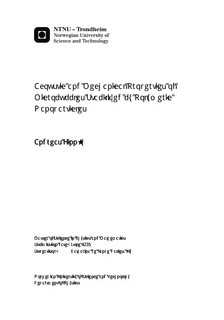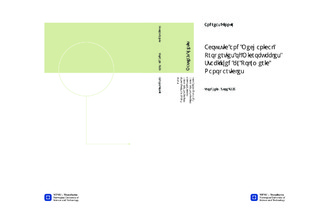| dc.contributor.advisor | Davies, Catharina de Lange | nb_NO |
| dc.contributor.author | Finnøy, Andreas | nb_NO |
| dc.date.accessioned | 2014-12-19T13:18:57Z | |
| dc.date.available | 2014-12-19T13:18:57Z | |
| dc.date.created | 2013-09-19 | nb_NO |
| dc.date.issued | 2013 | nb_NO |
| dc.identifier | 649794 | nb_NO |
| dc.identifier | ntnudaim:9946 | nb_NO |
| dc.identifier.uri | http://hdl.handle.net/11250/247051 | |
| dc.description.abstract | This thesis examines acoustic and mechanical properties of microbubbles stabilized bypoly(butyl cyanoacrylate) nanoparticles. The microbubbles are developed with the purposeof being applied in combination with ultrasound as a novel drug delivery systemto tumors. Knowledge about the acoustic and mechanical properties is essential to understand the interaction between ultrasound and the microbubbles, their drug deliverypotential and stability in the circulatory system.Microbubbles with different surfactant proteins, average diameter, and nanoparticlebatches are analyzed and compared in this work.Backscattered power and attenuation of ultrasound waves propagating through a suspensionof microbubbles are measured in the frequency range 1-20 MHz. The measurementsare done with microbubbles suspended in a sample chamber in a water tank. Attenuationare measured by using the same ultrasound transducer both for transmit andreceive. The attenuation coefficients are plotted as function of frequency, and theoreticalattenuation spectra calculated from the Church model and the Ho model are ttedto the experimental spectra by appropriate estimation of viscoelastic properties of themicrobubble shell. Using casein as a surfactant protein is found to increase the shearmodulus and viscosity of the shell compared to when Bovine Serum Albumin (BSA) is used. Microbubbles with BSA as surfactant protein and smaller average diameter show higher shear modulus, but lower viscosity compared to when the average diameter is larger.The backscatter is received with a transducer different from the transmit transducer.When a transmit transducer with center frequency 1 MHz is used, the scatter spectradisplay higher harmonics at pressures above 5-15 kPa. Furthermore, destruction takesplace above 170 kPa, but apparently more for the microbubbles with casein rather thanBSA as surfactant protein. Smaller microbubbles seem to exhibit more resistance againstdestruction.Measurements of microbubble shell elasticity is performed using atomic force microscopy(AFM) by applying nanoscale compressions (up to 500 nN) with a at cantileveron isolated nanoparticle-stabilized microbubbles. Values of the Young's modulusare found by fitting obtained force-deformation curves to the simple theoretical Reissner model. In accordance with the attenuation measurements, the results indicate that the casein microbubbles have higher Young's modulus than BSA microbubbles. The shell thickness is assumed to be 150 nm. A linear relation between the Young's modulus and the diameter is found for the microbubbles with casein as surfactant protein. | nb_NO |
| dc.language | eng | nb_NO |
| dc.publisher | Institutt for fysikk | nb_NO |
| dc.title | Acoustic and Mechanical Properties of Microbubbles Stabilized by Polymeric Nanoparticles | nb_NO |
| dc.type | Master thesis | nb_NO |
| dc.source.pagenumber | 104 | nb_NO |
| dc.contributor.department | Norges teknisk-naturvitenskapelige universitet, Fakultet for naturvitenskap og teknologi, Institutt for fysikk | nb_NO |

